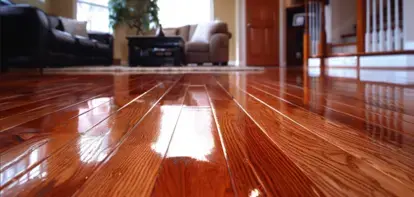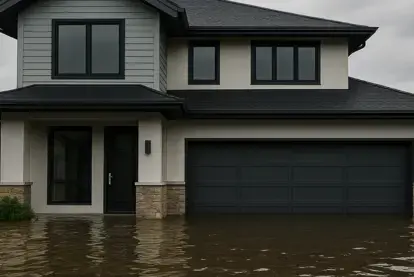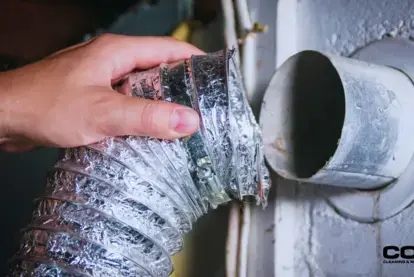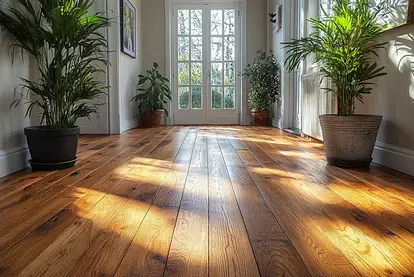
Why You Should Avoid Steam Mops on Hardwood Floors
Contact COIT for a professional cleaning!
Steam mops have become quite popular, and for good reason. Many steam mops do a great job cleaning and sanitizing ceramic and vinyl tile floors. The idea of getting floors squeaky clean and sanitized with no scrubbing, no soap, no chemicals, and no detergents is very attractive. They're often advertised as suitable for all types of floors, including hardwood.
However, hardwood floors require special care, and steam mops are not suitable for this type of flooring. Here’s why steam mops can harm your hardwood floors and what you should do instead to keep your floors looking their best.
How do Steam Mops Work?
Steam mops operate by heating water to temperatures ranging from 120 to over 200 degrees Fahrenheit. The device directs steam through a pad onto the floor.
This method cleans using hot water vapor, which penetrates surfaces to lift dirt and eliminate germs. While this process works wonders on ceramic and vinyl tiles, it presents significant risks when used on hardwood floors.
The Risks of Steam Mopping Hardwood Floors
Permanent Damage from Water and Heat
Hardwood floors are particularly susceptible to damage from moisture and heat, two elements central to steam mopping.
When water penetrates wood, it causes the wood to swell and change shape, which can lead to warping, buckling, and discoloration. The heat from steam can exacerbate this effect, accelerating damage and potentially leading to costly repairs.
The National Wood Floor Association (NWFA) and the World Floor Covering Association (WFCA) both warn against the use of steam cleaners on hardwood floors. They note that steam can break down the finish of hardwood, allowing moisture to seep into and damage the wood.
Warranty Concerns
Many hardwood floor warranties specifically exclude damage caused by moisture and heat. The use of a steam mop on these floors can void these warranties, leaving homeowners without protection should their flooring become damaged.
Cleaning Hardwood Floors Safely
Understanding the proper way to care for hardwood floors can prevent damage and maintain their beauty for years to come. Here’s how you can keep your hardwood floors clean and in excellent condition without the risks associated with steam mopping. COIT also has a floor cleaning guide to help you keep all of the flooring types in your home clean.
Regular Maintenance
Dust and dirt can scratch hardwood floors, so regular sweeping with a soft-bristled broom or dusting with a microfiber mop is crucial. Vacuuming with a hardwood-friendly attachment can also help remove debris from between the boards of your floors.
Proper Mopping Techniques
When it comes to mopping, less is more. Use a barely damp mop and a cleaner specifically formulated for hardwood floors.
Avoid using water if possible, but if you must mop, wring out the mop thoroughly to ensure it’s only slightly damp. This minimizes moisture exposure and protects the wood.
Immediate Spill Cleanup
Spills should be cleaned up immediately with a soft, dry cloth to prevent water from soaking into the wood. For sticky spills, a slightly damp cloth can be used, followed by a dry towel to remove any residual moisture.
Alternatives to Steam Mopping
Given the risks associated with steam mopping, you should know how to effectively clean your floors. Here are a few safe and effective alternatives:
Microfiber Mops
These mops are excellent for hardwood floors. They pick up dust and dirt without scratching the surface and can be used dry or with minimal moisture.
Hardwood Floor Cleaners
Use cleaning products specifically designed for hardwood floors. These cleaners will clean effectively without damaging the finish or penetrating the wood.
Opt for pH-neutral, non-toxic cleaners that don't leave residue or require rinsing. Always follow the manufacturer’s instructions on the label to ensure the best results and maintain the integrity of your floors.
Professional Hardwood Floor Cleaning
For deeper cleans or to maintain the integrity of your floors, consider hiring a professional cleaning service like COIT. Professional cleaners have the tools and knowledge to clean floors thoroughly without causing damage.
Contact COIT for a professional cleaning!
What If My Floor Still Looks Dirty?
While being proactive about cleaning is the best policy, we all know that life happens. If your floor is old or still looks dirty after cleaning, you’ll either need to get it refinished or professionally cleaned. Need more information on professional wood floor cleaning? Visit our wood floor page to see how COIT’s professional team can revitalize even the grungiest floors.



